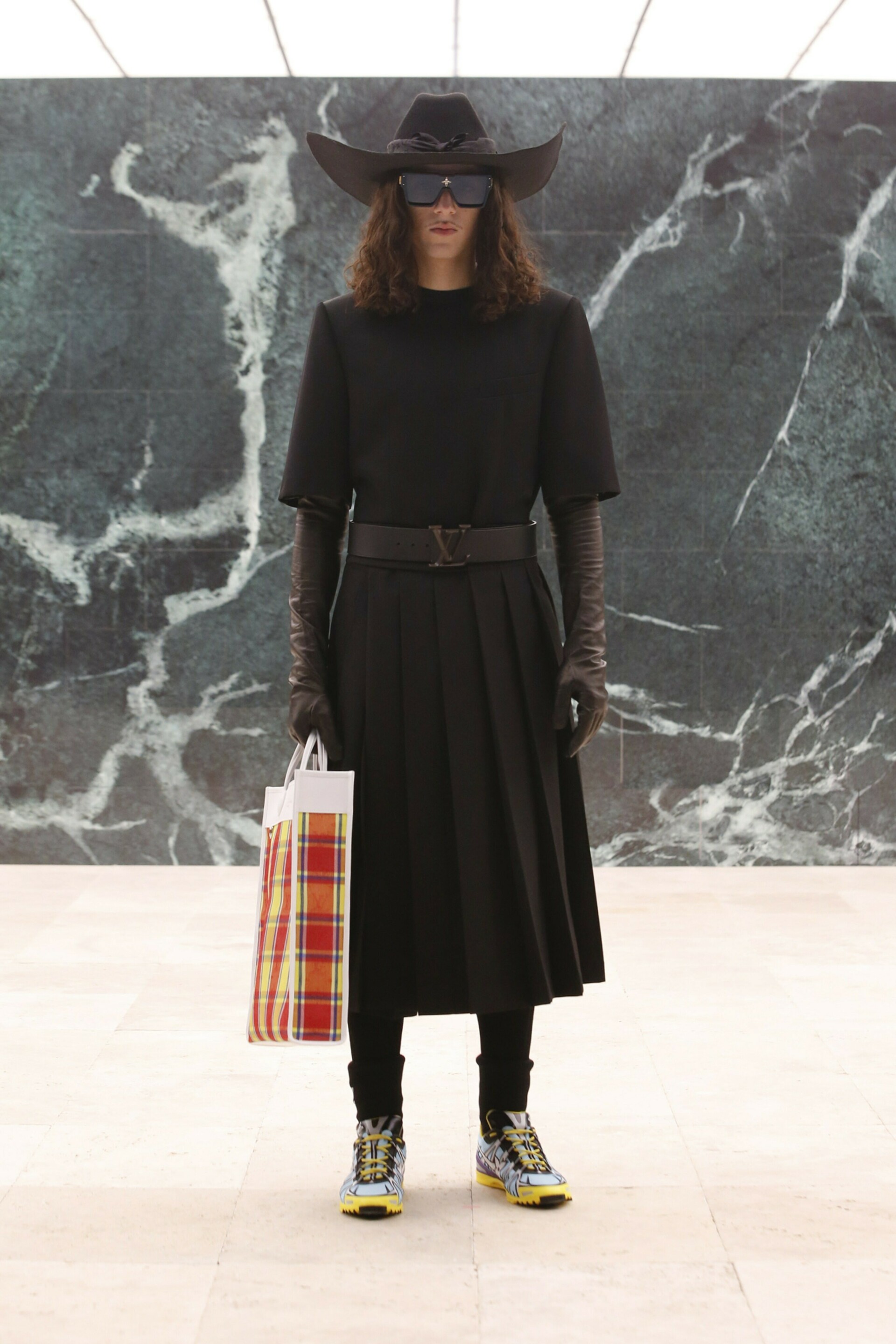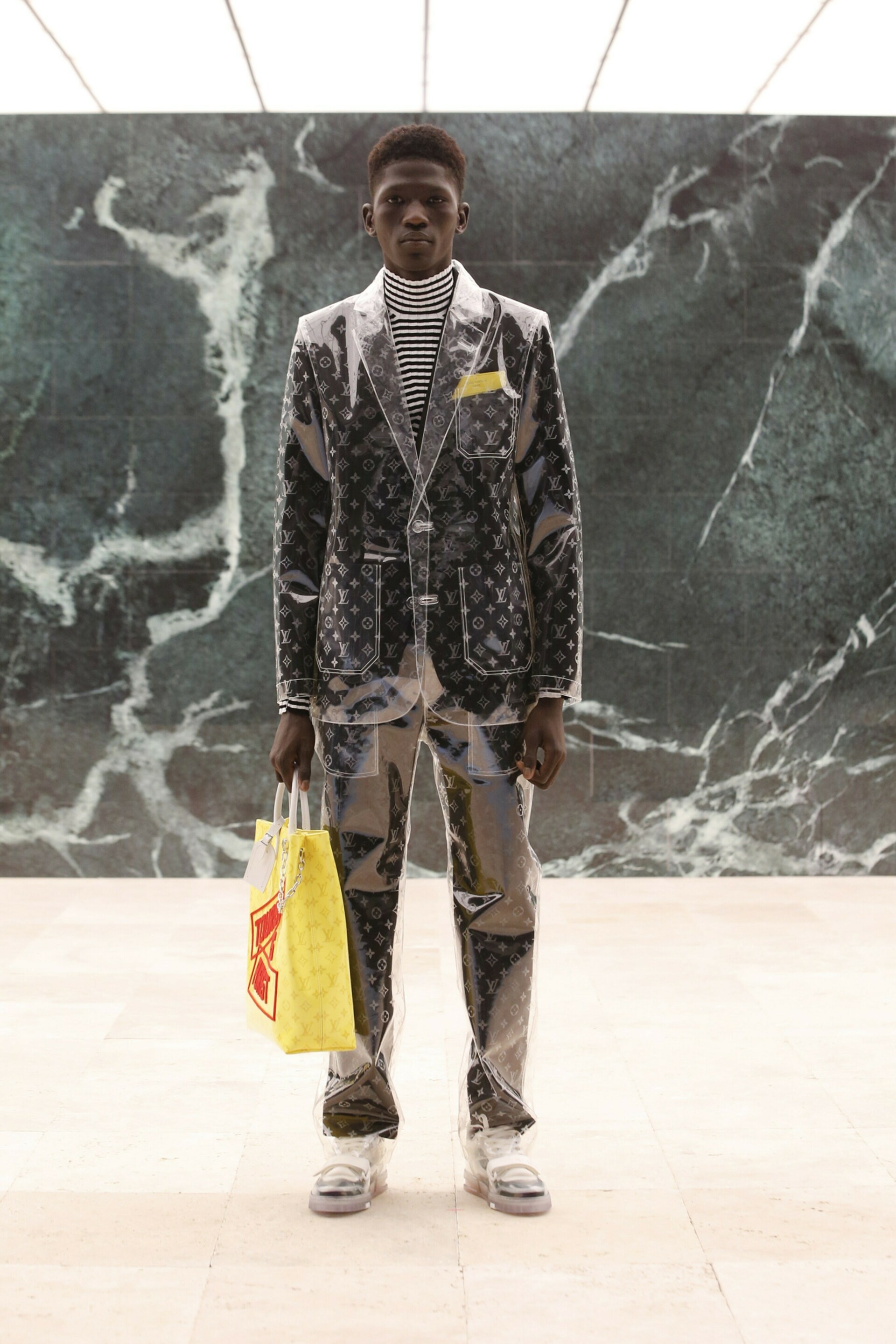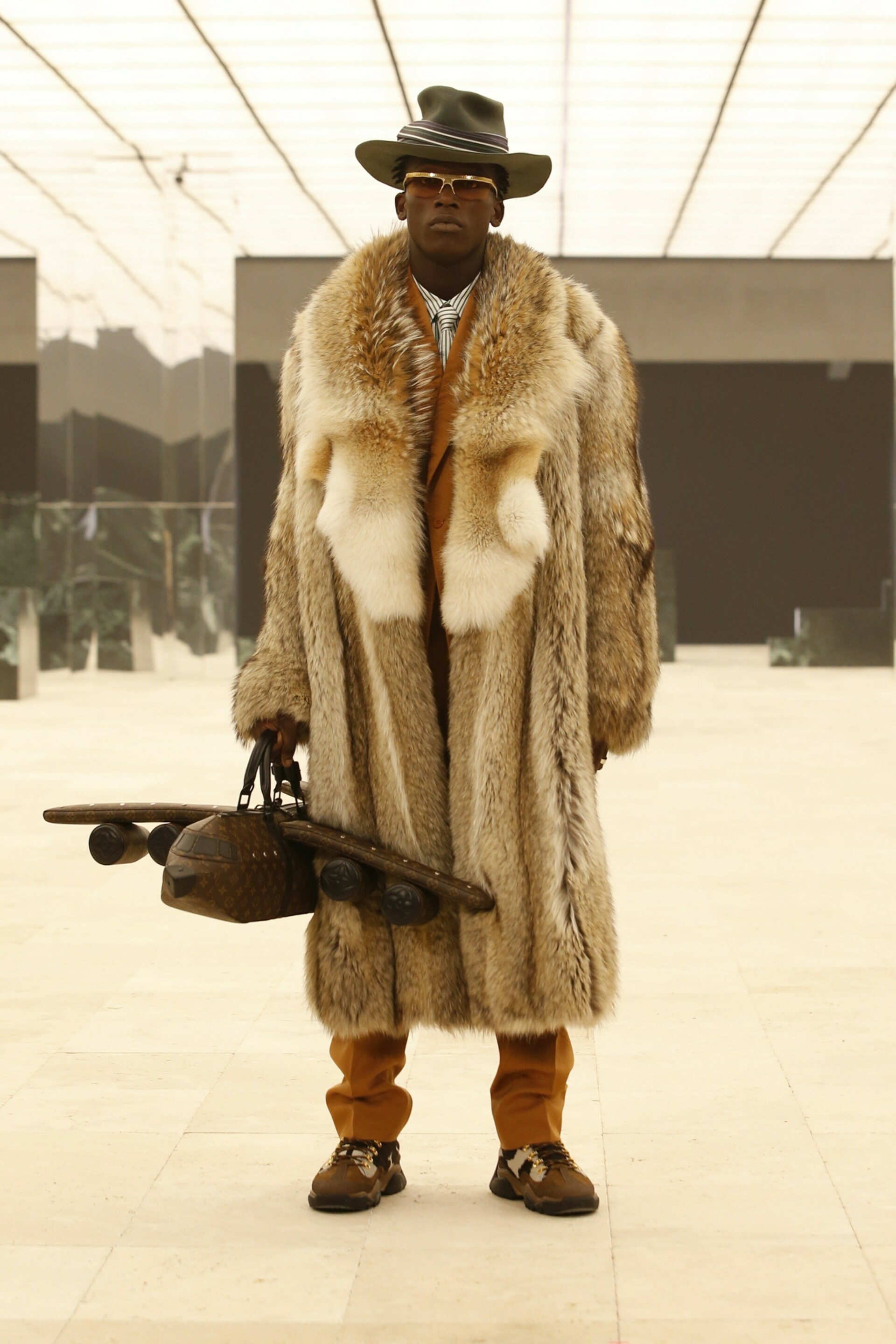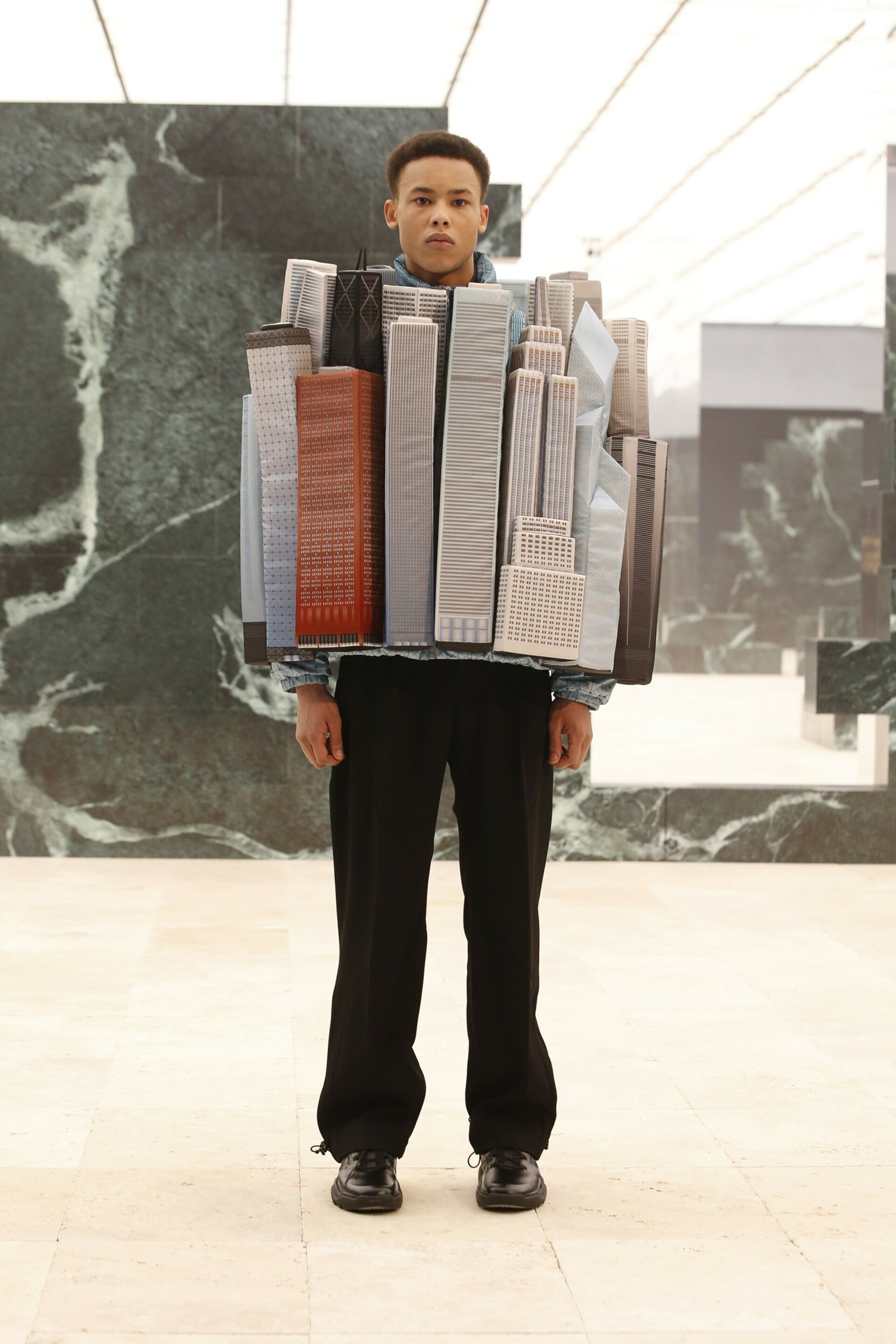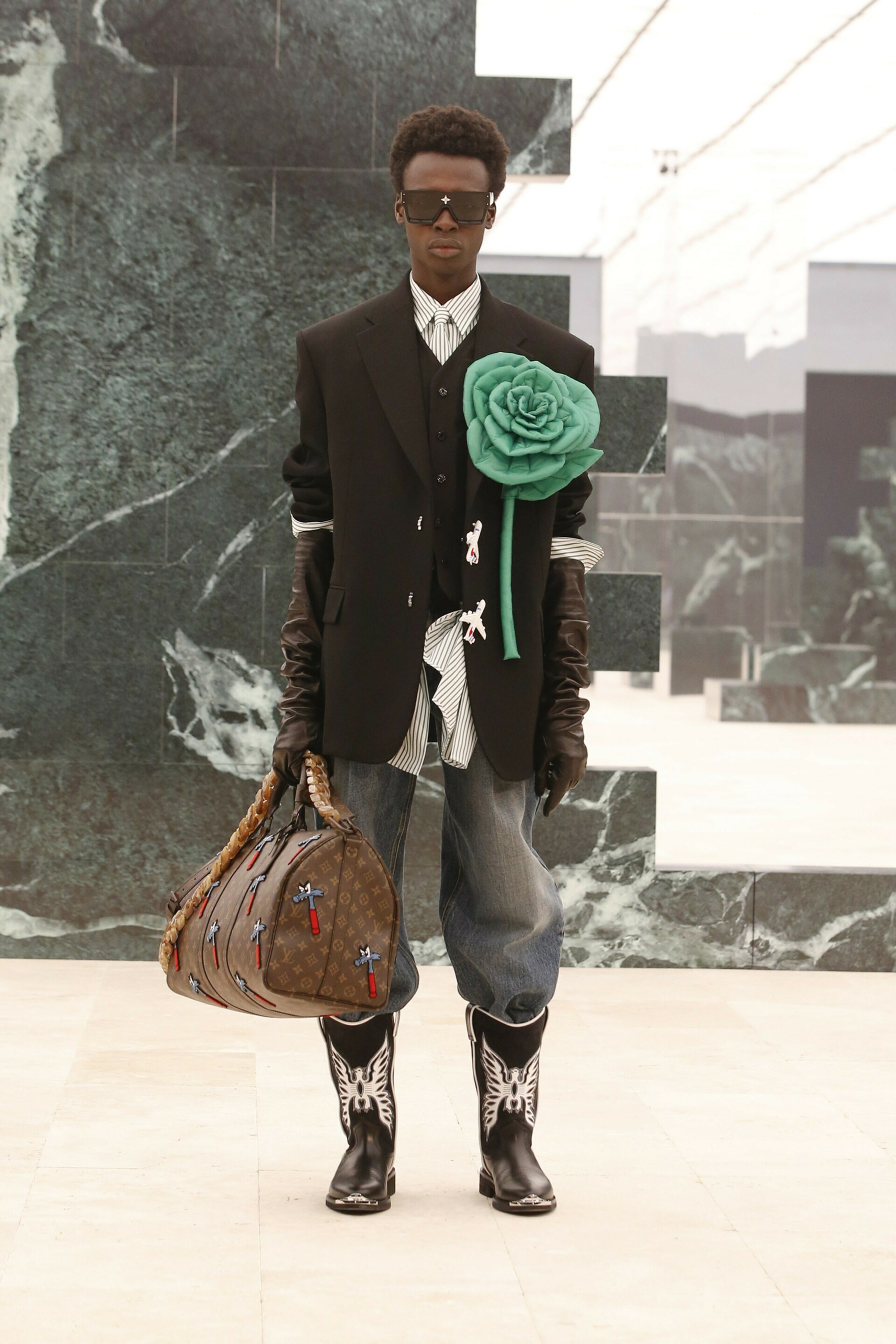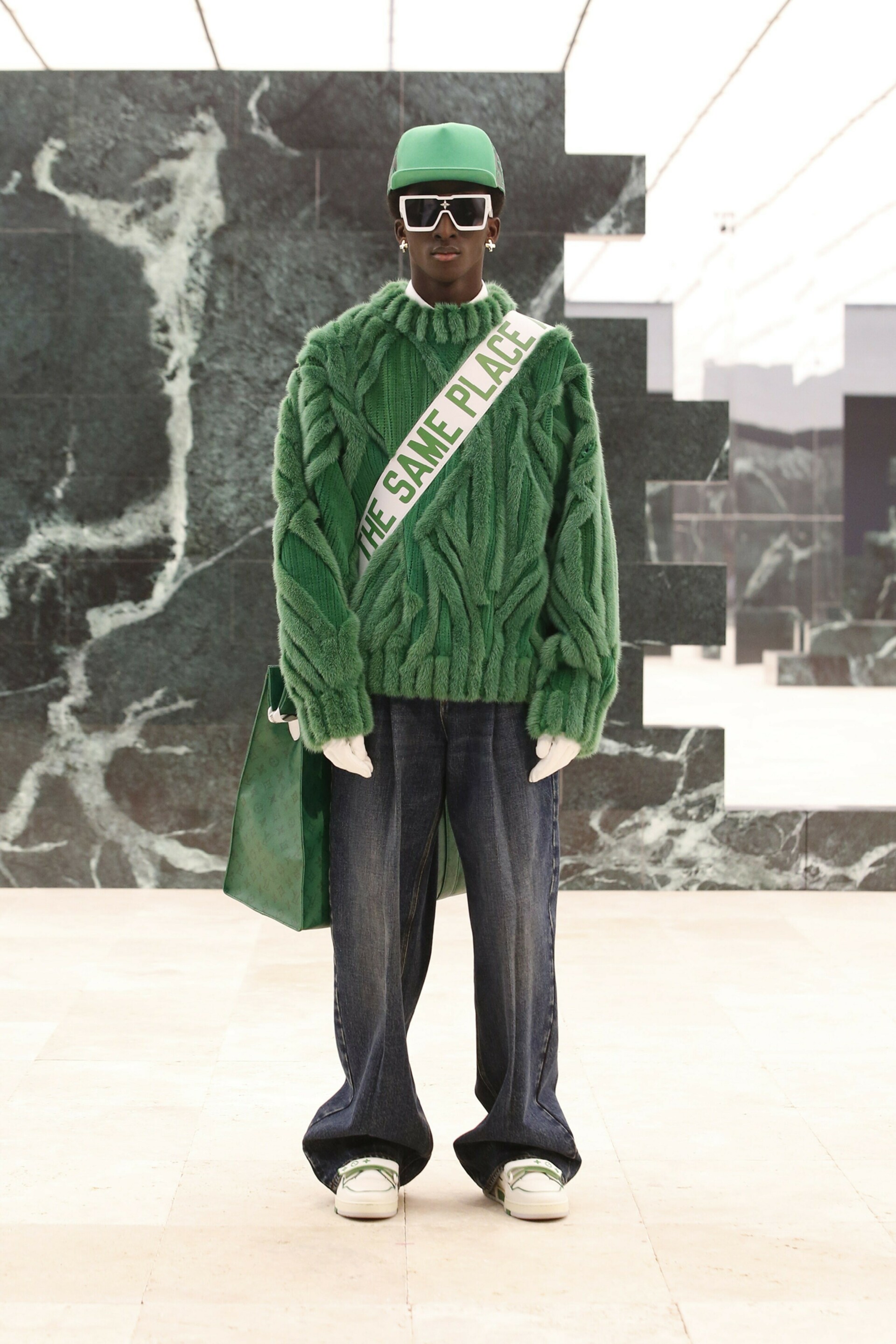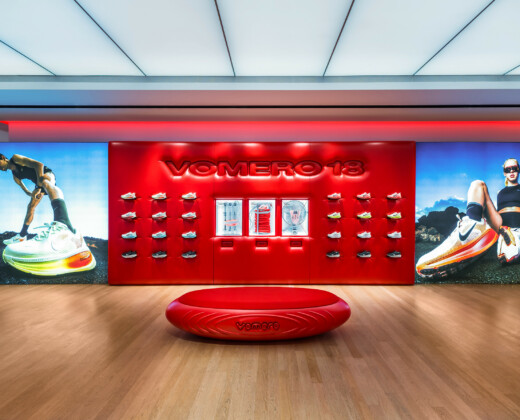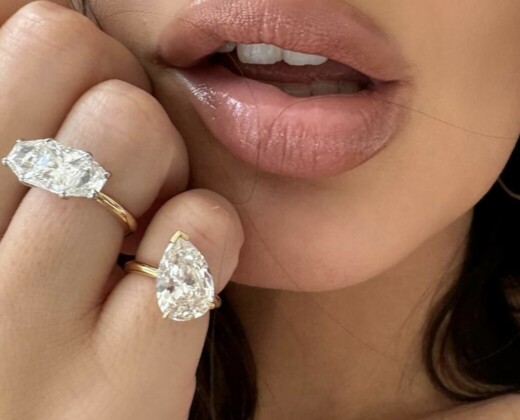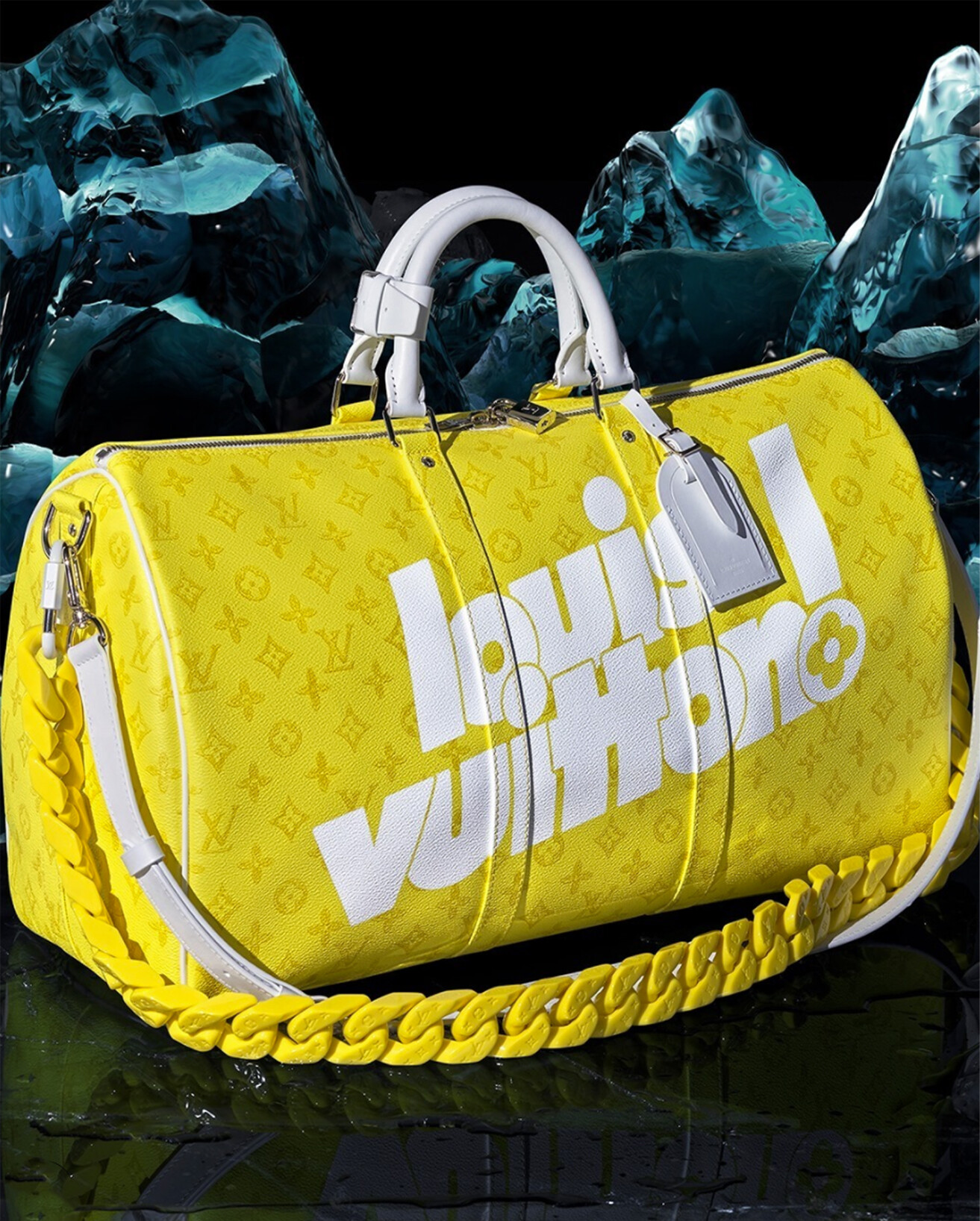
In a powerful demonstration of fashion’s potential role as a catechism for change, yesterday Virgil Abloh debuted his ground-shaking AW21 men’s collection for Louis Vuitton. In a time of great change, Louis Vuitton’s radical film carried a message of empowerment and reclamation for the marginalized communities of the world. It also unpicked the male archetypes we are all familiar with to instead draw attention to societies love of typecasting.
Abloh’s sixth collection for Louis Vuitton, titled ‘Ebonics’, was presented in a film directed by Josh Johnson, featuring a heavy emphasis on spoken word, dance and narrative. It carried a key message that viewers could either be a ‘tourist’ or a ‘purist’ – two binary identities which Abloh used in his first collection for LV.
Speaking to Vogue, Abloh explained that a tourist is someone eager to learn, whilst a purist wants to know everything. According to Abloh, he positions himself as both – he is an outsider who has become an insider in the once highly exclusive fashion industry, whilst being the person with the power to bring others in too.
The film is split into two distinct scenes. Opening with the stark whiteness of an icy tundra, we follow a lone figure (the singer Saul Williams) who holds a monogrammed silver LV trunk. A fedora hat, the angular silhouette of his black coat and the iconography of its aeroplane shaped buttons unravel our perceptions of which character he is; a businessman? 1920s Mafia hitman? Or a tourist?
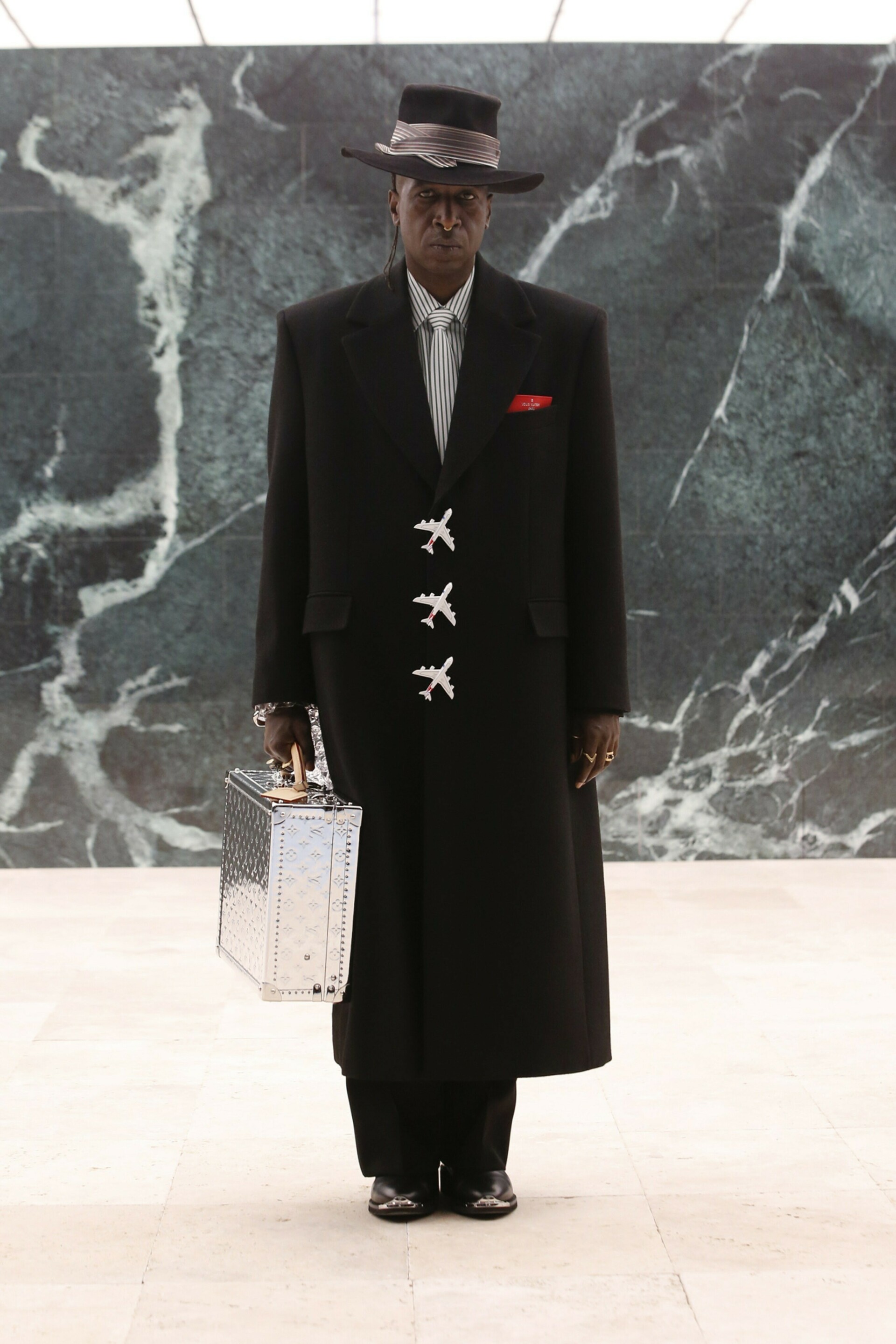
Abruptly we are transported to a new location by synchronised models swaying on ice-skates. Drawing on his rich knowledge of modernism as a designer but also architect, Abloh brings us next to the monolithic green marble of Paris’s Tennis Club de Paris. The contrast between the two landscapes was influenced by James Baldwin’s essay Stranger in the Village, published in 1953. The image of the lone figure of Williams is striking against the starkness of the snow and ice, a parallel Abloh draws from Baldwin’s description of his experience as a black man in a Swiss village. The entry of Williams into the second green marble scene is perhaps inspired by Abloh’s own entry as a black man into a world of art created from Eurocentric and predominantly white experience.
Inside the polished green marble structure of the Tennis Club de Paris, models laze about: some walking, some sitting, some are even propped up against the walls. Each look exaggerates and playfully embellishes a male character type – cowboy boots are added to a salesman’s pinstriped suit; another is made entirely from holographic monogrammed PVC. The LV silver trunk features repeatedly, clearly one of the hero pieces of the collection, but we also catch glimpses of an LV ‘Keepall’ in the shape of a plane, floor-length coats, African draped wraps inspired by Abloh’s heritage, tartan kilts and Western hats. The message Abloh conveys is that clothing can have the power to debunk any dress code assigned to the male archetypes we are familiar with. This opens up space for a new opportunity, new identity and a new language of inclusivity.
An art heist sub-plot emerges involving the iconic LV silver trunk within the narrative. Williams walks around listing the names of several key cultural figures until the jazz and bass provided by Yasiin Bey take over. A forest-green colour story emerges amid the pinstripes and monogram, and we even see knitwear bedazzled with the Paris and New York Skylines. Notably, some of Louis Vuitton’s classic accessories have been reinvented to feature spray painted effects and bright neon elements.
In LV’s AW21 presentation, Abloh did more than just respond to Black Lives Matter and the other crises which the world faced in 2020. He demonstrated how fashion and virtual presentations like this one can provide a vessel for discussion, a visual commentary of a multitude of societal issues which need to be unravelled.
Abloh is aware of the importance of his work and speaking about the collection has stated that “within my practice, I contribute to a Black canon of culture and its preservation. This is why, to preserve my own output, I record it at length”.
We would argue that down to the garments alone, this is LV’s best menswear collection yet, but the real success here was the promotion of fashion as a platform to spark the difficult questions which need to be heard.
Words by Becca Seib


